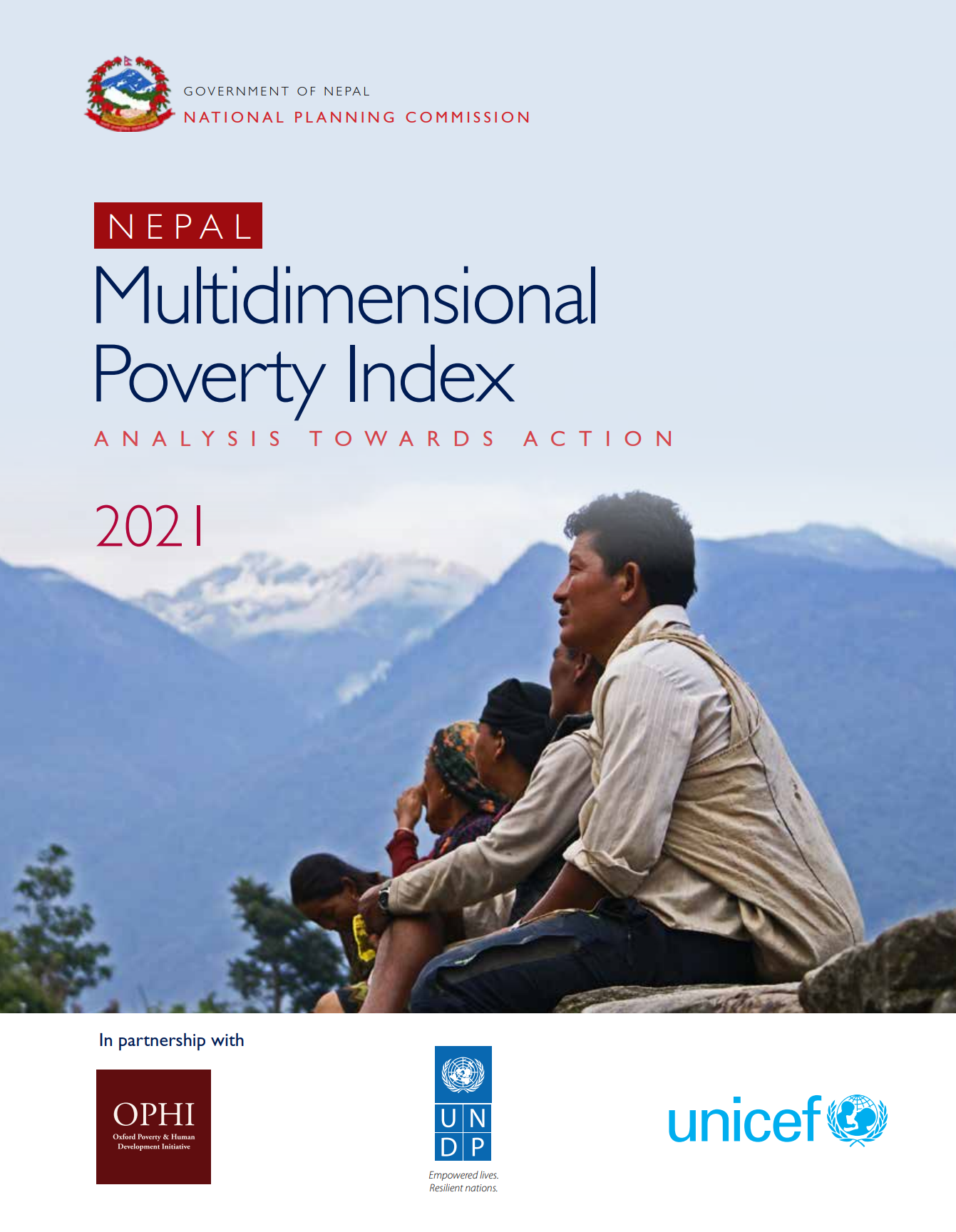Nepal Multidimensional Poverty Index: Analysis towards Action 2021
Nepal Multidimensional Poverty Index: Analysis towards action presents updated MPI figures and additional indicators reflecting the relationship between multidimensional poverty and vulnerability towards COVID-19 in Nepal. This report by the Government of Nepal National Planning Commission in partnership with OPHI, UNDP, and UNICEF uses 2014 and 2019 data from the Nepal Multiple Indicator Cluster Survey (NMICS).
The MPI is used to monitor and evaluate multidimensional poverty reduction over time. Nepal uses the MPI to meet its national development plans, SDG targets by 2030 and identify who is most vulnerable to COVID-19.
Key findings:
- 3.1 million people left multidimensional poverty between 2014 and 2019.
- Nepal reduced its incidence of poverty from 30.1% in 2014 to 17.4% in 2019.
- 22% of children or 2.2 million children are MPI poor. Although children are 35% of the population they constitute 44% of the MPI. Over the five-year period, children in Nepal reduced their MPI faster than adults.
- The MPI poor are more deprived of COVID-19 related indicators overcrowding (36%), access to handwashing facilities (65.2%), and internet (80%) compared to the general population (17.5%, 38.2%, 47.2% respectively).
- In 2019, 32.7% of people lived in rural areas, yet 52.5% of the MPI poor lived in rural areas.
Citation: CBS and OPHI (2021). Nepal Multidimensional Poverty Index: Analysis towards action. Central Bureau of Statistics (CBS) of the Government of Nepal, and Oxford Poverty and Human Development Initiative (OPHI). Kathmandu.



